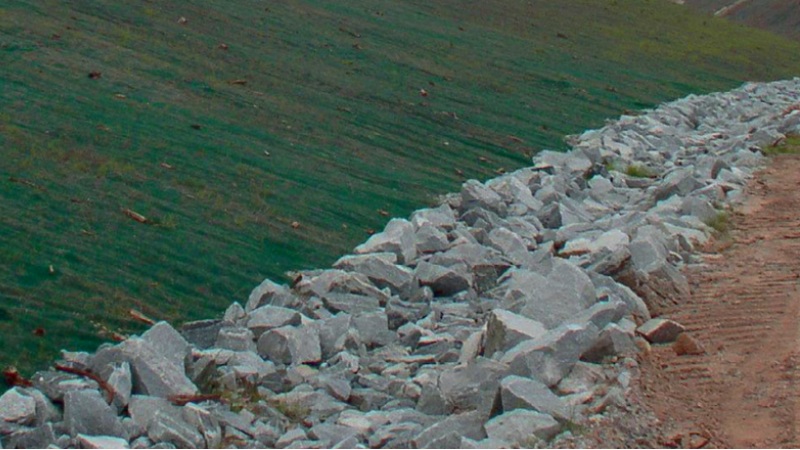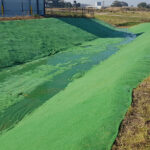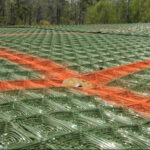How to choose the right Turf Reinforcement Mat for your project
Turf Reinforcement Mats (TRMs) are a unique type of permanent erosion control solution, providing strength, long-term durability and an effective matrix that encourages vegetation to develop.
There are several types of TRMs available, each with different characteristics and uses. From TerraMat high-performance TRMs to the more simple construction of Eromasta Seedmat, each product provides varying degrees of shear resistance, longevity, and resistance to environmental factors such as rainfall and wildlife.
These factors provide a good starting point when deciding which Turf Reinforcement Mat is the right fit for your project.
Things to consider when assessing TRMs
Vegetated Shear Resistance
Typically, the final, fully vegetated state is of primary concern in TRM selection. The TRMs offered by Polyfabrics offer industry-leading performance and options to fit project requirements and economics. In conditions where non-hydraulic stresses, geotechnical loading or extended design life is required, opting for a woven material is a sound choice.
Rainfall Resistance
All TRMs provide significant protection against erosion caused by rainfall and rain splash. As TRMs are designed to be permanent installations, rainfall erosion is rarely the primary mode of performance to consider. Vegetation is expected to establish and significantly increase performance over time.
Unvegetated Shear Resistance
Similar to rainfall erosion resistance, unvegetated shear resistance is not typically a primary concern for TRMs with the expectation that vegetation will establish. For the period of time prior to vegetation establishment, materials with a fully synthetic footprint provide greater assurance of protection.
Permanence or Durability
Products such as TerraMax Xtreme (XT) offer the longest design life and highest durability, with a woven structure providing high tensile strength and the highest level of UV protection. In addition, the lofty 3D woven structure is the most wildlife-friendly and resistant to non-hydraulic stresses like foot traffic, mowing, geotechnical loading and light vehicle traffic.
Interaction with Wildlife
Although controlling erosion and sedimentation is the primary goal of any turf reinforcement mat installation, interaction with local wildlife is often a factor.
Stitch bonded materials consist of various nettings and fills that are bound by stitching. By their very nature, these materials are designed to catch soil, and can sometimes inadvertently entrap wildlife.
In sensitive areas where wildlife interaction is of primary importance, the best practice is to consider materials with mesh openings equal to or less than 5mm. These are generally regarded as the most favourable to avoid entanglement with wildlife, and once vegetation establishes, wildlife entanglement is typically less of a concern. It is also advisable to allow for higher rates of fasteners in areas with wildlife entanglement concerns.
Need help selecting the right TRM?
Polyfabrics supplies a wide range of TRMs and erosion control products to the civil engineering, landscape and building construction industries. Our in-house team of technical engineers and consultants can provide the right solutions for your next project.



